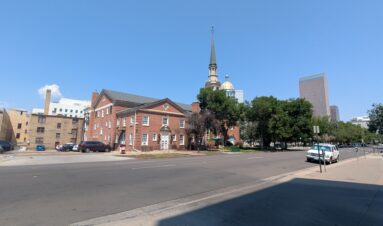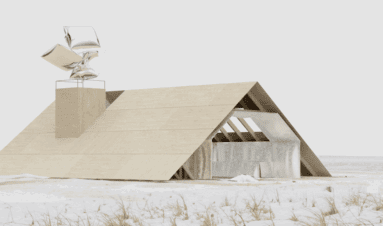Saint John’s Cathedral
1350 Washington Street
Fast Facts
Architect: Tracy & Swartwout
Architectural Style: English Gothic Revival
Year Built: 1911
Designation: Denver Landmark National Register Historic District National Register of Historic Places
Neighborhood: Capitol Hill
No Photography Allowed
Handicap Accessible
Saint John’s Cathedral
St. John’s Cathedral has deep roots in the history of Denver. It was the first Episcopal congregation, beginning in 1860 and becoming chartered in 1861 as The Church of St. John’s in the Wilderness. The early congregations worshiped in several downtown locations before they built their first cathedral in 1880 at 20th and Welton. This Victorian Romanesque structure was destroyed by fire in 1903. Tracy and Swartwout Architects were selected to design the new cathedral at the current site. A chapter house was completed on the site in 1904 and construction of the Gothic Revival cathedral itself began in 1905 and was initially completed in 1911.
The building was constructed of Indiana limestone in the late Gothic Revival style. The architecture of the cathedral included some contemporary features such as the center bay with a soaring window over a three-part entrance. The oak reredos with thirteen carved figures and the wrought iron and brass rood screen were saved from the old cathedral at 20th & Welton. As building progressed, plans changed and only the nave (not nave and transept) was built from Tracy and Swartwout’s design. The center aisle is 185 feet long and 65 feet high (the original Tracy and Swartwout design).
Over the years, the cathedral has been subject to a series of changes and additions. In 1927, Burnham and Merrill Hoyt Architects designed a side chapel (St. Martin’s Chapel) and a large parish hall (Dagwell Hall) in rural English style. St. Francis Chapel and the Paul Roberts Education Building were added in 1957. The Education Building replaced the original Chapter House, which was torn down. Later, the Cathedral expanded its grounds to the Plaza Cathedral Square on the north side of 14th Avenue.
The stained glass windows have artistic significance in that they represent a 100-year collection of stained glass art of masters from the Edward Frampton Studio in England, the Charles Connick studio in Boston and the work of Colorado artist Edgar Britton. Additional artistic elements include the commissioned woodwork and fresco that decorate the chapel and main church. There are also stones from the foundations of Canterbury Cathedral and Westminster Abbey set in the narthex wall.
Currently, this complex of stone buildings occupies the entire city block bounded by east 13th and 14th Avenues and Washington and Clarkson Streets. These ecclesiastical buildings present not only the historical continuity of a local congregation from pioneer days to the present, but also demonstrate a continuous architectural and artistic development reflecting the changing tastes and capacities of the community.
References
Peabody, O. St. John’s Cathedral. [pamphlet].
History. Retrieved from www.sjcathedral.org/about/history.
Voelz Chandler, M. (2013). Guide to Denver Architecture. Denver, Colorado: Fulcrum Group.
National Register of Historic Places, Saint John’s Cathedral, Denver, Denver County, Colorado, NationalRegister #75000513.
Map
Saint John’s Cathedral
1350 Washington Street, Denver, CO, USA
Nearby Sites
View All
First Baptist Church of Denver
First Baptist Church of Denver First Baptist Church of Denver was organized prior to Colorado's ...
More Info
Denver Woman’s Press Club
The Denver Woman’s Press Club (DWPC) clubhouse, known as the Burr House, was built in 1910 in the...
More Info